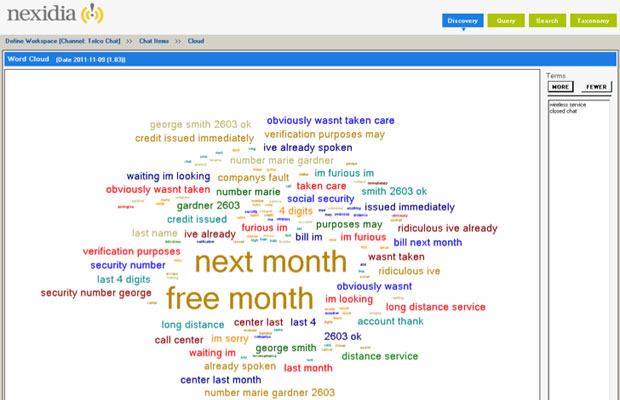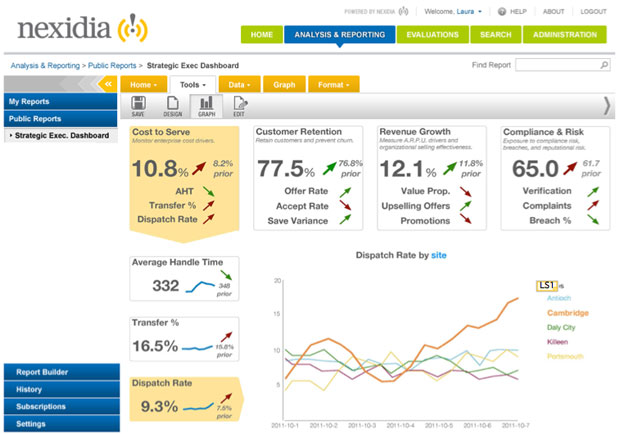
Call center software can now identify everything from anger to dissatisfaction in the voices of customers. Since call centers are all about voices, it makes sense to analyze those voices in order to provide better customer service. The field of voice analytics, in fact, has become a big business.

Both through recorded calls and through real-time and near-real-time analysis, call center agents and managers have access to an unprecedented amount of information about the person on the other end of the line.
This information can reveal everything from general dissatisfaction or confusion to imminent account or service cancellation, known in the industry as “churn.” It also gives call centers the opportunity to respond more effectively to customer problems, questions, and complaints.
Listening In
Voice analysis relies on newly-evolving software that identifies emotions such as anger and frustration in the patterns, pitch, tone, tempo, and other elements of the human voice.
“The human voice is made of many repeating patterns,” Amir Liberman, CEO of Nemesysco, told CRM Buyer. “Everything that attracts your attention will generate a slight disturbance in these patterns. We look carefully at this voice chart, and we identify disturbances.”
Context matters, so many of these systems combine speech analytics with the actual words being said, in order to provide a complete picture of what’s going on in a particular call.
“We listen to how each word is said — tempo, silence, agitation level, stress — and then we annotate that for every word and every conversation,” Jeff Gallino, chief technology officer with CallMiner, told CRM Buyer. “We add context and words to the indicators to get the full story.”
Some systems focus more on the actual words spoken than on vocal qualities, identifying which calls indicate problems based on the conversation itself.
“We take a different approach to emotion detection,” Larry Skowronek, VP of product management with Nexidia, told CRM Buyer. “We focus on the words in the conversation. If a customer says ‘I am unhappy,’ that’s a good indication of their sentiment. Plenty of people can say ‘I am unhappy’ in a perfectly reasonable tone. The emotion the customer is expressing is not the same as the sentiment that’s being expressed.”

Determining sentiment based on what is actually said by both the agent and the customer, says Skowronek, is the main goal of Nexidia’s analysis.
“We look for what is spoken on both sides of the conversation and use that to determine sentiment,” he said. “It’s the sentiment that has a business value.”
Taking Action
Listening to and analyzing voices is one thing, but responding to that analysis is another. Voice analytic systems offer call centers a variety of options, from using recordings for coaching and training to responding in real time to problematic calls.
“We’re trying to transition supervisors into coaches,” said Gallino. “That’s what customer relation management is all about. The measurement of the agent measures everything else. If you improve the agent, you improve everything else.”
In some cases, a manager might jump on a flagged call to help fix a customer’s problem.
“It can be very effective to have the manager jump on the call,” said Liberman. “We improve customer satisfaction, and we improve management response.”
In other situations, an agent’s screen might provide a suggestion for a product or discount to offer a dissatisfied customer.
“By using interaction analytics, we offer near-real-time analysis,” Matthew Storm, director of innovation and solutions with NICE Systems, told CRM Buyer. “We use those indicators to provide guidance to employees. What we typically do is use emotion indicators to provide guidance to the employee who is having the interaction. If a customer is getting upset, it might indicate [he’s] going to churn or cancel the account. [Our system] allows the employee to give an offer that is customized.”
In the future, voice analytics might even match callers with agents who are well-suited to them in personality or problem-solving style.
“A next version might be to find the best person to deal with you,” said Liberman. “There are agents that have different personalities, and a system could match personalities. Then you could really provide different service and more intimate service.”






















































I’m wondering how deeply customized can this be? Different contexts yield different intonation and thus can perhaps lead to erroneous interpretations, no? How is this countered?